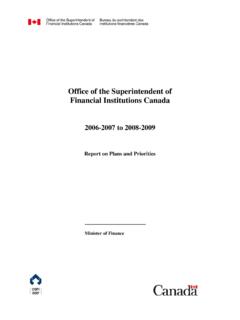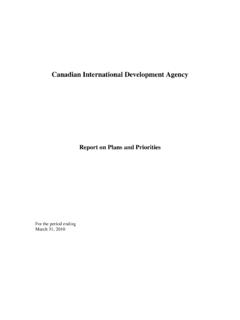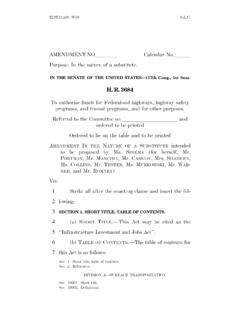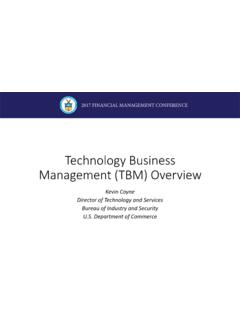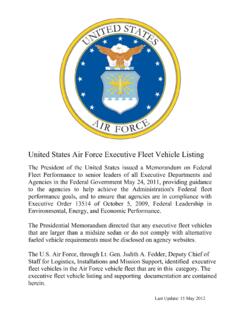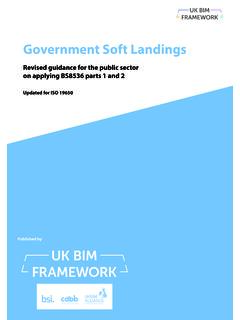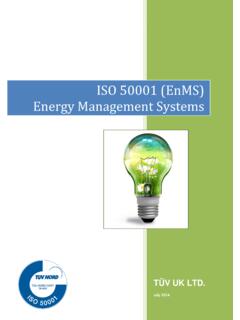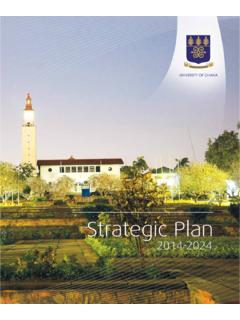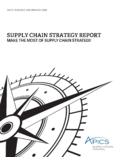Transcription of Project Charter Guide eng - tbs-sct.gc.ca
1 Project Charter Guide Feedback and Questions To help maintain the currency of this document, feedback and questions are welcomed. Please contact: IT Project Review and Oversight Chief Information Officer Branch Treasury Board of Canada Secretariat Ottawa ON K1A 0R5 Canada Email: Her Majesty the Queen in Right of Canada, represented by the President of the Treasury Board, 2008 Catalogue No. BT48-4/2-2008E-PDF ISBN 978-1-100-11473-6 This document is available on the Treasury Board of Canada Secretariat s website at This document is also available in alternative formats on request. Table of Contents 1 Use of the Project 1 What is a Project Charter ? .. 1 Why create a Project Charter ? .. 1 Who is responsible for the Project Charter ? .. 1 How to create a Project Charter .
2 2 Tailoring the Project Charter to specific 2 Use of the Project Charter 6 Section 1. Charter 7 Document change control .. 7 Executive summary .. 7 Authorization .. 7 Section 2. Project Overview .. 8 Project summary .. 8 Project goals, objectives, and business outcomes .. 8 Project scope .. 9 Milestones .. 9 10 Project cost estimate and sources of funding .. 11 Dependencies .. 12 Project risks, assumptions, and constraints .. 13 Section 3. Project Organization .. 14 Project governance .. 14 Project team 15 Roles and responsibilities .. 16 Project facilities and 16 Section 4. Project References .. 17 Section 5. Glossary and Acronyms .. 17 Appendix: Roles and Responsibilities 19 22 Project Charter Guide 1 Introduction This Guide explains the steps needed to create a Project Charter for the delivery of a Project .
3 The Guide is meant to be used together with a document called the Project Charter Template, and, where relevant, it includes examples to illustrate the content. The first section, titled Use of the Project Charter , gives background information on the purpose of the Charter , who is responsible for creating it, work that should be carried out beforehand in order to prepare the Charter , how the Charter should be customized, and key sections required at the beginning. Use of the Project Charter What is a Project Charter ? The Project Charter is a document issued by the Project initiator or sponsor that formally authorizes the existence of a Project , and provides the Project manager with the authority to apply organizational resources to Project activities. 1 In addition to its contract purpose, the Project Charter includes most elements of a preliminary Project scope statement, which describes what is and what is not included in the Project .
4 It also helps to control changes to the scope of the Project throughout its duration or life cycle. The intent is to cover, in a single document, all activities of the initiating process group2 as defined in A Guide to the Project management Body of Knowledge. Why create a Project Charter ? As a comprehensive overview of the Project , the Project Charter allows all parties involved (stakeholders) to reach agreement and document major aspects of the Project such as the objectives, the scope, the deliverables, and the resources required. The Charter supports the decision-making process and is also often used as a communication tool. Who is responsible for the Project Charter ? The Project Charter should normally be developed by the Project sponsor or a manager external to the Project team.
5 In practice, however, the Project manager often plays a major role in the development of the Project Charter . The Project manager works closely with the Project sponsor, who provides background information for the Project ( purpose of the Project and linkages to 1. Project management Institute (2004). A Guide to the Project management Body of Knowledge, Third Edition, p. 368. 2. Those processes performed to authorize and define the scope of a new phase or Project or that can result in the continuation of halted Project work. 2 Treasury Board of Canada Secretariat business needs, strategic priorities, objectives, and outcomes). The Project manager also interviews stakeholders to gain more information in order to develop the Charter .
6 How to create a Project Charter This Guide supports a template that was developed to highlight all standard elements that should be covered in the Project Charter to formalize a Project . The template can be obtained at This Guide also contains a section called Use of the Project Charter Template that explains how to complete each topic covered in the template. Tailoring the Project Charter to specific projects Regardless of the size and type of Project , the elements of a Project Charter are the same, just as the fundamental Project management processes and principles remain the same. Although the depth and scope of applying these processes and principles may change from Project to Project , the Project framework remains constant. Adapting the Project Charter to the Treasury Board of Canada Secretariat s Project Complexity and Risk Assessment Tool The Project manager is expected to provide a comprehensive overview of the Project in the Project Charter .
7 The following table lists, in the left column, four classes of projects and suggests some areas to consider when developing a Project Charter , based on the results obtained through a risk assessment. This assessment would be contained in the business case for the Project . To help with a risk assessment, a Project Complexity and Risk Assessment Tool is under development. Project Charter Guide 3 Description Risk Considerations Project Charter Considerations Sustaining Project The primary Project goal is to sustain service from an existing asset by addressing aging components or deficiencies that limit its ongoing use. It is not a redevelopment. Negligible new capability or functionality added. Business-initiated changes are likely minimal. Scope confined to a single system or asset within a single program; one or few stakeholders.
8 Low to no requirements risk. Business changes are largely cosmetic a service enhancement or versioning updates. Business processes are essentially unchanged, although technology interfaces may be different minimal retraining is required at the business level. Minimal change management . Risks more likely associated with technology than business. Higher implementation risks in systems with demanding performance or availability ( non-functional) characteristics. Scope definition and boundaries should be limited to a single system or asset within a single program. Usually one or few stakeholders. Prerequisites, assumptions, and constraints should address potential disruption to current operations. Deliverables should be expressed mostly in terms of updates to existing product, service, or result.
9 Cost estimate should determine if the updates affect the ongoing costs (operation). Risks and interdependencies should include technology and implementation risks (such as parallel run or business disruption). Project References section should refer to a requirements document. 4 Treasury Board of Canada Secretariat Description Risk Considerations Project Charter Considerations Tactical Project Usually driven by an immediate business need to deliver an additional capability, often within a limited time frame, or to position an existing asset for anticipated needs by adding capability. Capability added may be functional or non-functional. Scope may involve multiple systems, programs, or organizational entities (departments) but with a clear authority and a simple governance structure.
10 Changes and additions to business processes are required with small- to medium-scale change management . Effect is often localized to a specific segment of the business. Medium to high requirements risk and related risk of scope creep; development risk increases according to portion being redeveloped or added. Technology risk may be high if significant performance or availability ( non-functional) enhancements required. Implementation risk medium, ranging to high if underlying technology base replaced. The Charter and risks should show a greater progression in the level of Project management from Sustaining to Transformational, identify more detailed considerations with increased complexity and risk to support Project scope, time, and cost management requirements. Scope should clearly indicate the business processes that are affected.



